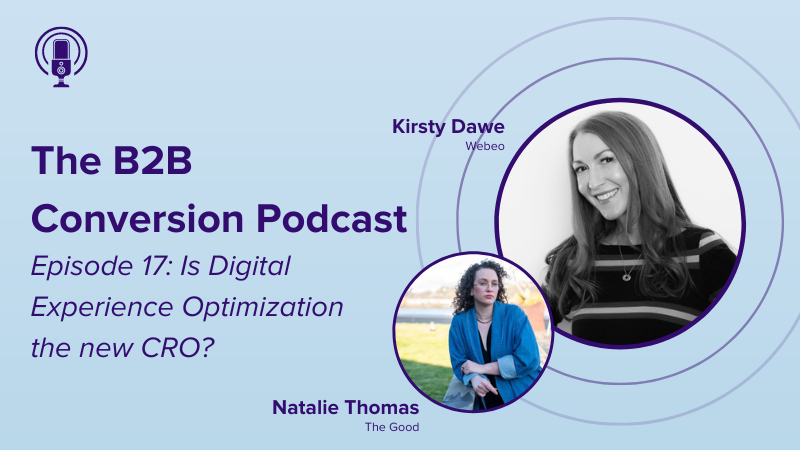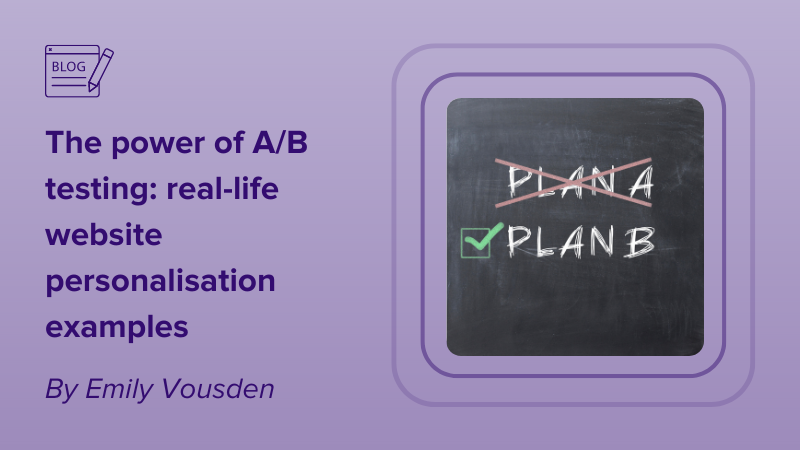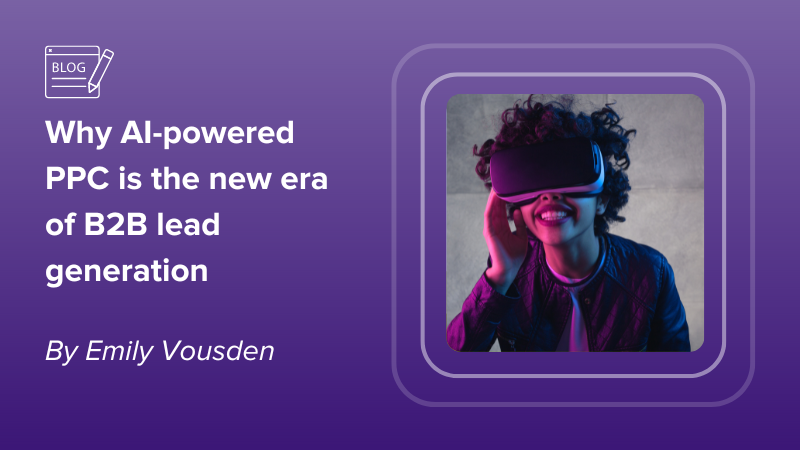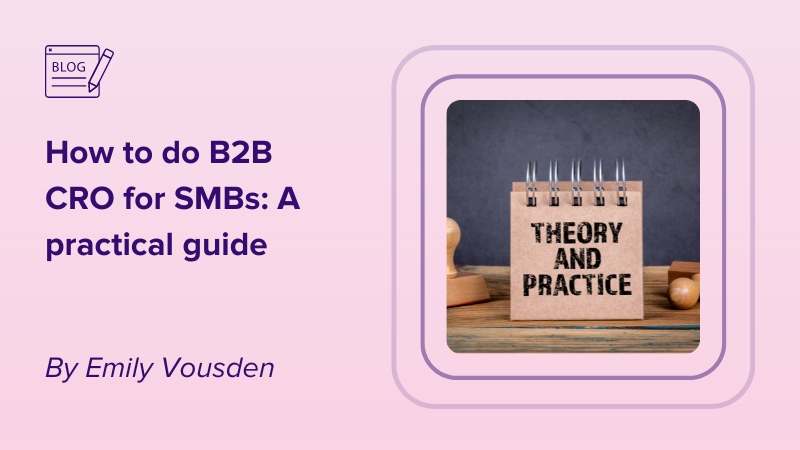As B2B marketers, there’s no moving away from the fact that personalization is now a hygiene factor in our integrated campaigns. Our communications are designed to be personal and as relevant as possible to the audience we’re engaging with. The rise in adoption of ABM strategies demonstrates that this is marketing done right and delivers significant results in terms of reputation, relationships and revenue.
At Webeo, you’d expect us all to be convinced on the ROI benefits of personalization, in terms of driving engagement and demand. But, to remove the subjectivity, let’s look at what B2B marketers are saying about its value, with some great stats from Gartner’s Maximize the Impact of Personalization survey:
Whilst the value of personalization is compelling, we’re not leveraging it across all channels. Outbound is definitely the personalization leader – in a survey with B2B Marketing last year, we asked B2B marketers to build a picture of where personalization fits in their overall strategic efforts and the response was:
- 60% of us are using outbound across our channels.
- 30% of us are able to say we’re personalizing both inbound and outbound activities.
- 69% are just using outbound, or not personalizing at all.
(The full report can be found here – and the results could be a useful benchmark for your own efforts)
So, why is there a gap between our inbound and outbound personalization? It could be that we find it easier, and potentially more measurable, to personalize our outbound activities, so it’s natural then to focus our efforts here. Or simply that we’re not sure where to start, or not aware of the personalization tools and data software available. But, with 88% of B2B Marketers saying that their customers expect a personalized experience – there has never been a better time to plug the gap between your outbound and inbound efforts.
So, if you’re looking to start or build on your personalization success, here are 4 tips to help you:
1. Unify inbound and outbound
To deliver the seamless experience buyers expect (and crave), we’ve got to be better at joining up the digital dots. For many of us, it’s not should we personalize, it’s how should we personalize and thankfully we’ve come a long way since the early days of ‘Hi [insert first name]’ generic emails. We know deep, segmented personalization works, and we can really amplify this by shifting our focus from outbound to inbound.
Map out/revisit your buyer journeys on a regular basis and look at all of your touchpoints to identify sources of failure. The website is by far the most influential element, but it doesn’t stop there. In your digital journey, does your live chat recognize your buyer? Are you refreshing the content you serve for returning visitors and acknowledging where they are in the funnel? Do your inbound sales development team have a complete picture of your buyer they can call on from your CRM, as soon as they pick up the phone? Doing this exercise will uncover your gaps and help you make choices on where to start filling them to have the most impact.
2. Make personalization a business focus
A personalization strategy can benefit the whole business, not just marketing and sales. Bring in other departments – customer success and support should be involved from day one. Whilst technology will go a long way, to get the full potential of personalization you need to work as one team, aligned to the same goals and sharing insight. Leverage organization and individual based insight from your internal teams – creating scores where possible, so you can create personalized experiences at scale.
3. Personalize your website
Whilst for most B2B campaigns there are great landing pages in place with highly segmented content and CTA’s, all too often your prospects or customers will bypass the customer journey and head straight to your website. From the moment they land on your site, every individual deserves to be able to effortlessly find the most relevant information for them – on their terms, not yours.
By deploying website personalization software, you can easily create relevant versions of your website that recognize the visitor as soon as they land on your site. Look for a no-code solution that offers split test functionality, so you can really get the most out of the software from day one, without the need for technical coding experience.
4. Data is key
Data is the foundation of personalization and you can call upon multiple sources. To start your personalization journey as quickly as possible, choose a plug and play solution that offers data from a combination of rich, accurate IP data, so you’re able to personalize to unknown visitors. You can also leverage the rich data inside your MA and CRM platforms, so you can get even more granular with your personalizations and create persona-based experiences. Using the tracking cookies already in place, allows you to leverage funnel-based experiences and customer-based experiences, moving the needle beyond acquisition and into retention and upsell.
5. Segment your experiences
Any campaign segmentation you have should be extended to your personalization strategy. For example, you can create website personalizations based on industry, business size, location and funnel stage – at a business and individual level. The same also applies for your inbound sales development team. Do they have a complete picture of your buyer they can call on from your CRM, as soon as they pick up the phone? Do they have access to segmented buyer personas and visibility of content consumption?
6. Small changes have a big impact
Once you have a solid understanding of your buyer journeys and you’ve gathered and analysed the data and insight about your audience, it’s time to create the experiences – the best bit right? If you’re creating a website experience, really subtle changes can drive a significant impact on results. For example:
- Welcome the visitor by business name, or reference their industry.
- Feature relevant imagery that will resonate with a particular industry or business/individual.
- Social proof by showing relevant client logos and testimonials.
- Personalise CTA’s.
- Remove references to other industries, or working with smaller or larger businesses.
So in conclusion, with 83% of business buyers citing that being treated like a person, not a number, is very important to winning their business*, it’s clear that personalization needs to be a key part of your B2B marketing strategy, in order to improve prospect and customer experiences and drive revenue and business growth.
We’ve touched upon the key areas to get you started on your personalization journey – in summary you need accurate, rich data and cross-functional collaboration to really understand your target audience. Deploy the personalization tools to enable you to create simple, yet relevant experiences that your prospects and customers expect.
Need advice on your website personalization strategy? Has this sparked your interest? Are you asking yourself ‘should we personalize?’ or ‘how do we personalize?’. Either way, get in touch, we’d love to hear from you.
*Salesforce Research: Customer Expectations Hit All-Time Highs.




